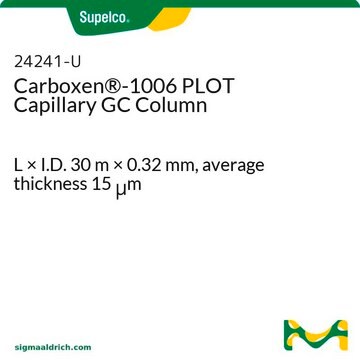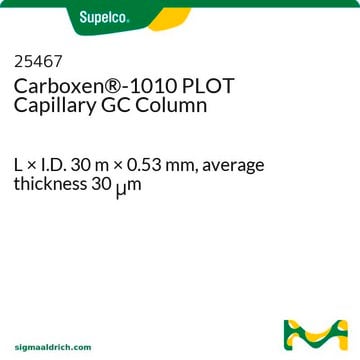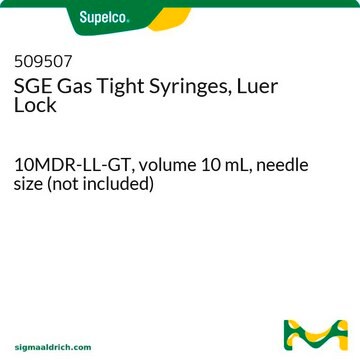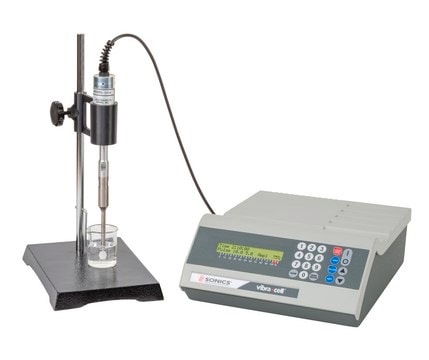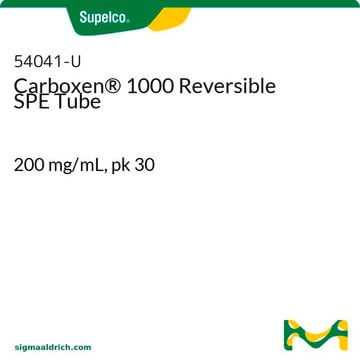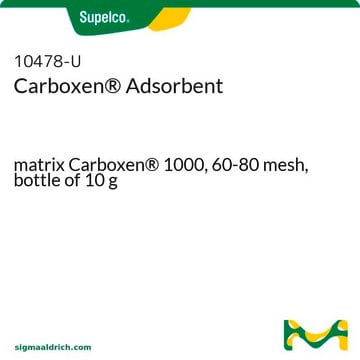24246
Carboxen®-1010 PLOT Capillary GC Column
L × I.D. 30 m × 0.32 mm, average thickness 15 μm
Sinônimo(s):
Carboxen® 1010 PLOT Column, 30m x 0.32mm
About This Item
Produtos recomendados
Materiais
fused silica
Agency
ASTM® D3612-96
descrição
PLOT = Porous Layer Open Tubular
fabricante/nome comercial
Carboxen®
Parâmetros
≤25-250 °C temperature (isothermal or programmed)
espessura média
15 μm
df
15 μm
técnica(s)
gas chromatography (GC): suitable
C × D.I.
30 m × 0.32 mm
Grupo ativo da matriz
Carbon molecular sieve phase
aplicação(ões)
chemicals and industrial polymers
food and beverages
tipo de coluna
capillary PLOT
Procurando produtos similares? Visita Guia de comparação de produtos
Categorias relacionadas
Descrição geral
USP Code: None
Phase:
- Carbon molecular sieve
- Subambient to 250 °C (isothermal or programmed)
Aplicação
Outras notas
Informações legais
Escolha uma das versões mais recentes:
Já possui este produto?
Encontre a documentação dos produtos que você adquiriu recentemente na biblioteca de documentos.
Os clientes também visualizaram
Active Filters
Nossa equipe de cientistas tem experiência em todas as áreas de pesquisa, incluindo Life Sciences, ciência de materiais, síntese química, cromatografia, química analítica e muitas outras.
Entre em contato com a assistência técnica